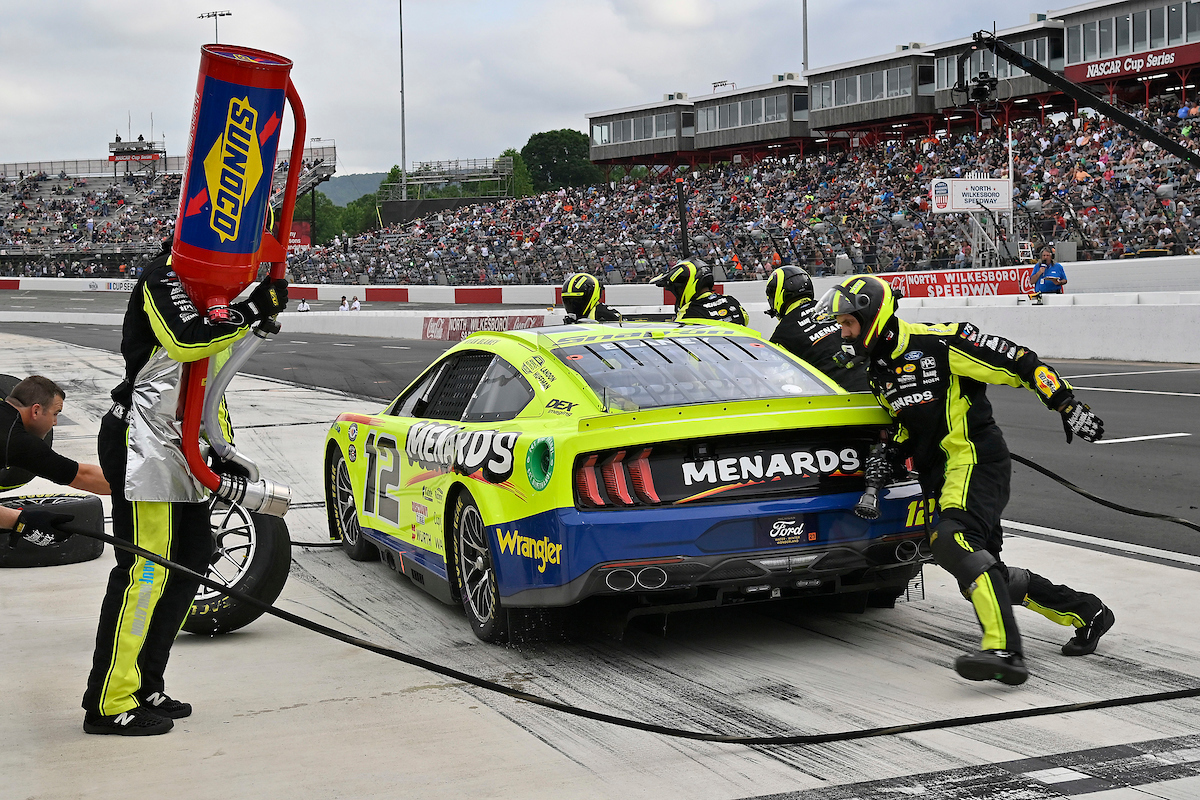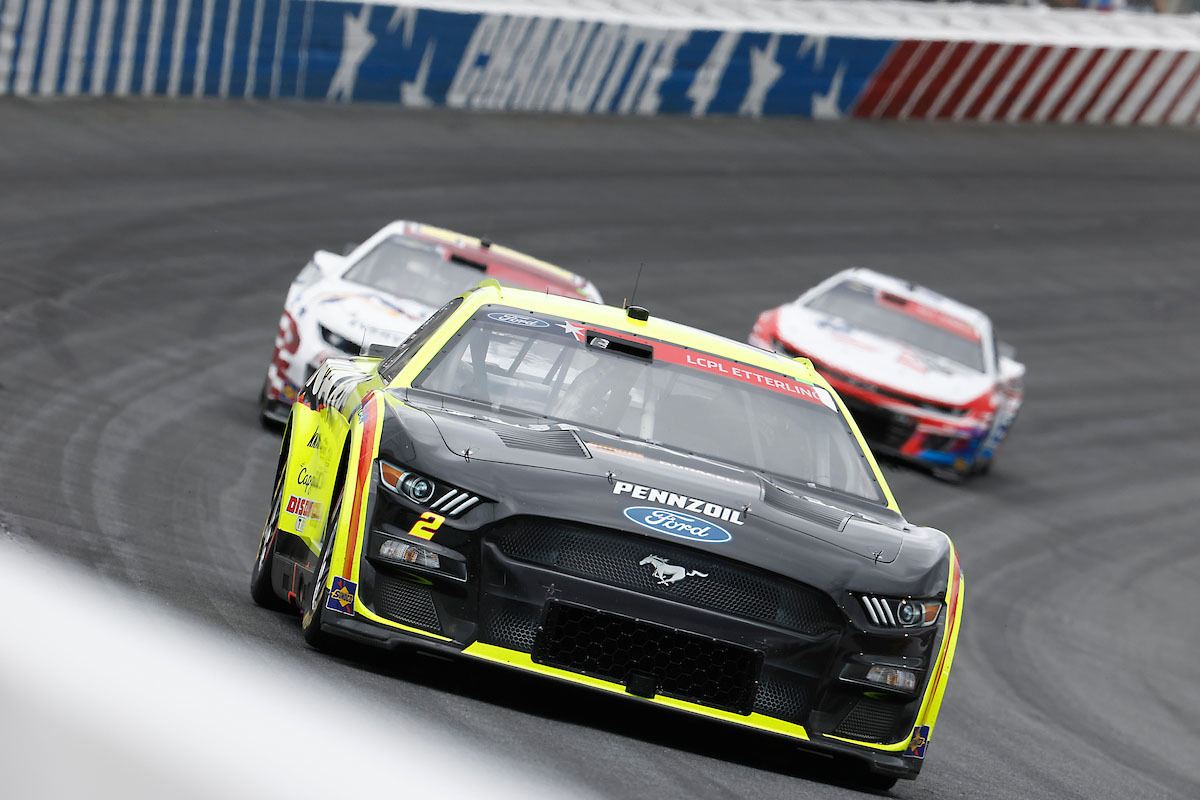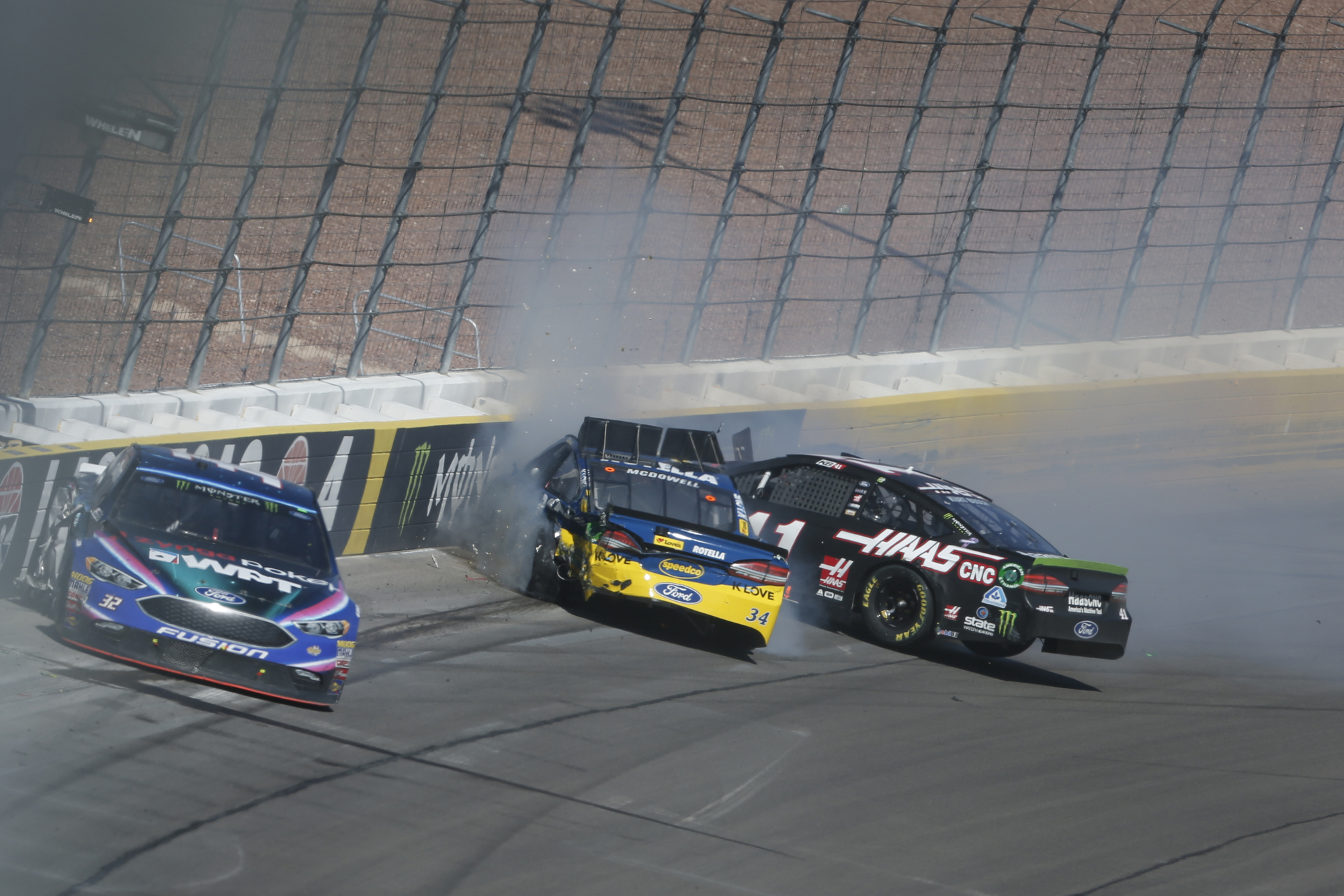How Fast Do NASCAR Cars Go In KM?
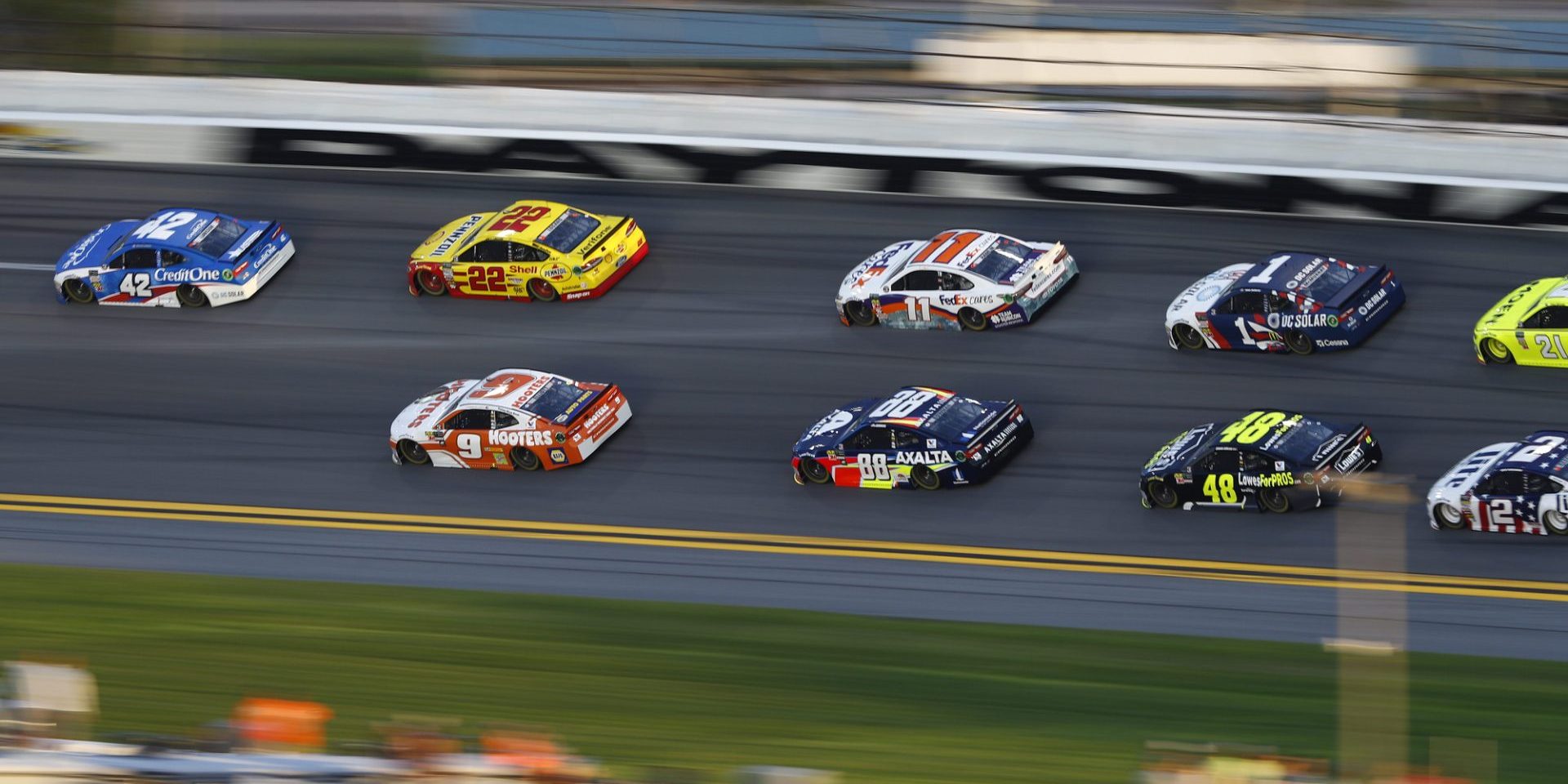
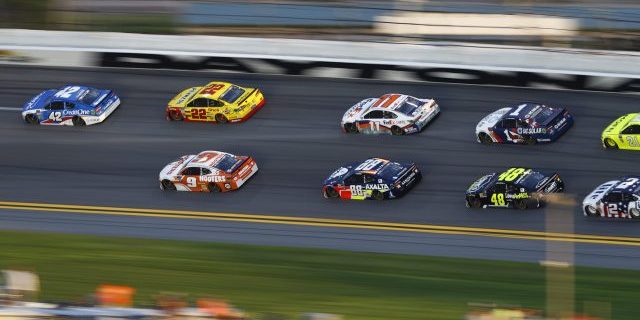
During race conditions, measurements show that the Next Gen NASCAR vehicles have reached up to 322 km/h (200 mph), showcasing their high-performance capabilities.
On the track, speed can vary greatly depending on a number of factors, including the racetrack layout, weather conditions, and the specific setup of the car for the race. On superspeedways, renowned for their high banks and long straights, such as Daytona and Talladega, it’s common for cars to achieve their peak speeds. The recorded average speeds at these venues can be up to 311 km/h (193 mph) during practices, with the highest documented top speed in a NASCAR race weekend being 341 km/h (212 mph), achieved by Bill Elliott in 1987 during qualifying at Talladega.
Understanding the speeds of NASCAR cars not only involves looking at peak numbers but also considering the consistent speeds maintained over the course of a race. Factors such as the drafting technique, where cars align closely to reduce air resistance, also play a significant role in the complex calculation of speed. As drivers navigate the race, their skills in handling the vehicle at high speeds are crucial to their performance and, ultimately, their success on the track.
Table of Contents
Fundamentals of NASCAR Speed
Speed in NASCAR is a result of a combination of advanced engine technology and meticulous vehicle engineering, designed to achieve maximum performance on the track. Let’s examine the essential aspects that contribute to the impressive speeds of NASCAR vehicles.
Speed Metrics in NASCAR
NASCAR races showcase vehicles reaching formidable speeds, where power is conveyed in terms of horsepower (hp) and velocity in miles per hour (mph) or kilometers per hour (km/h). The speeds vary depending on the track type, with superspeedways allowing for the highest speeds.
- Average speeds on superspeedways: 193 mph (311 km/h) during practice
- Record qualifying speed: 212 mph (341 km/h), set in 1987
- Typical max speed: Up to 200 mph (322 km/h)
These values translate into different speeds on different types of tracks:
- Intermediate tracks: 175-190 mph (282-306 km/h)
- Short tracks: 125-145 mph (201-233 km/h)
Mechanics of Speed
The mechanical prowess of NASCAR vehicles owes significantly to their engines and the power they can deliver. These engines, specifically built for high performance, must balance raw power with operational constraints like heat and resistance.
- Engine power: Capable of producing upwards of 750 horsepower
- Aerodynamic design: Streamlines airflow to reduce drag and increases speed
- Vehicle weight: Regulations limit weight to ensure safety and competitive fairness
The ingenuity in NASCAR’s mechanical domain ensures that not only are top speeds impressive but also that the cars can sustain high performance consistently around the track. With advancements in technology and engineering, NASCAR continues to improve upon these metrics while enhancing the safety and integrity of the sport.
Historical Speed Records
The landscape of NASCAR racing is marked by breathtaking speed achievements, with certain records standing out due to their significance and the era they were set in.
Iconic Records
Bill Elliott holds a prominent place in NASCAR history with a record-breaking top speed. At Talladega Superspeedway in 1987, he set a speed record of 341 km/h (212 mph) during qualifying, a figure that remains unmatched in official NASCAR race weekends. Talladega, known for its high speeds due to its long and steeply banked track, was the perfect venue for such a feat.
Progression of Speed Over Time
The progression of speed in NASCAR can be observed through several milestones. In the 1970s, races like the Daytona 500 witnessed average speeds around 259 km/h (161 mph). Over the decade, NASCAR cars breached the 200 mph mark, with Buddy Baker recording a lap at 322.5 km/h (200.447 mph) at Alabama International Speedway. Speeds continued to evolve, with Rusty Wallace unofficially clocking 228 mph (367 km/h) at Talladega in a 2004 test without a restrictor plate, though not in an official race setting. Current NASCAR vehicles, shaped by regulations for safety and competition, often see peak speeds around 313 km/h (195 mph) when drafting.
Comparative Speed Analysis
In examining the velocities of NASCAR vehicles, it is informative to contrast these with the speeds of other racing leagues like Formula 1 and IndyCar.
NASCAR vs. Formula 1
NASCAR vehicles boast impressive top speeds, reaching upwards of 322 km/h (200 mph), particularly on superspeedways. In contrast, Formula 1 cars, designed for agility and high-speed cornering, can achieve top speeds over 360 km/h (223 mph), though their average speeds across different tracks may vary comparing to NASCAR. Both series emphasize raw power and aerodynamic efficiencies, but F1 machines benefit from advanced engineering that allows for higher peak speeds on certain circuits.
NASCAR vs. IndyCar
When comparing NASCAR to IndyCar, the IndyCar vehicles often demonstrate higher velocities due to their lighter weight and aerodynamic profiles, reaching top speeds of around 380 km/h (236 mph) at the Indianapolis 500, for example. NASCAR cars, while capable of exceeding 320 km/h (200 mph), exhibit lower average speeds on most tracks because of their heavier build and different aerodynamic standards designed for closed-body stock car racing.
Influence of Racetracks on Speed
The speed of NASCAR vehicles significantly varies depending on the type of racetrack they are navigating, with some tracks allowing for higher top speeds than others due to their unique characteristics.
Super Speedways
Super speedways, such as Daytona International Speedway and Talladega Superspeedway, are known for their long and wide open stretches, enabling NASCAR cars to reach some of their highest speeds. At Talladega, cars can hit top speeds exceeding 322 km/h (200 mph), thanks to the track’s length and banking which allow drivers to maintain high speeds with relatively less aerodynamic drag.
- Talladega Superspeedway: Top Speed > 322 km/h (200 mph)
- Daytona International Speedway: Comparable to Talladega Superspeedway
Short Tracks
On the contrary, short tracks like Martinsville and Bristol are characterized by their shorter length and tighter turns. These features require drivers to decelerate considerably, thus reducing the car’s potential top speed. For example, speeds at Bristol Motor Speedway rarely exceed 177 km/h (110 mph), as drivers spend a significant amount of time braking and accelerating through the turns.
- Martinsville Speedway: Lower top speeds due to track design
- Bristol Motor Speedway: Top Speed ~ 177 km/h (110 mph)
Road Courses
Road courses, such as Circuit of the Americas and Sonoma Raceway entail a series of complex turns and varying elevations. NASCAR vehicles on these tracks display lower top speeds compared to oval tracks, often capping at around 161 km/h (100 mph), as the technical nature of the course demands frequent changes in speed and direction.
- Circuit of the Americas: Intricate turns and elevation changes
- Sonoma Raceway: Demanding course reduces top speeds
Safety and Regulations
In NASCAR, regulating speed and ensuring driver safety are of utmost importance, which has led to the development of various safety measures and the implementation of restrictions to maintain both competitiveness and safety margins.
Restrictor Plates
Restrictor plates are used in NASCAR to limit the power output of engines, effectively reducing the cars’ maximum speed. This measure helps to decrease the likelihood of accidents by controlling the cars’ top speeds, especially at tracks where high speeds significantly increase the chance of severe collisions. Restrictor plates work by limiting the flow of air and fuel to the engine:
- Size of plate opening: Determines the maximum airflow
- Impact on speed: Reduces possible peak speed to enhance safety
- Primary usage: Implemented at superspeedway tracks
Next Gen Cars and Safety Measures
The introduction of Next Gen cars brought several advancements in terms of safety and auto racing performance:
- Aerodynamics: Designed to improve handling and grip at high speeds.
- Tires: Better suited to withstand high temperature and wear, providing more consistent grip levels.
- Safety measure integration: Focus on driver protection during collisions, utilizing advanced materials and design.
These Next Gen cars are engineered not just with speed in mind, but also with an emphasis on minimizing risks during high-speed racing, including safer barriers and improved vehicle chassis to protect the driver in case of an accident. Such safety enhancements closely align with the speed regulations to maintain a safe racing environment.






